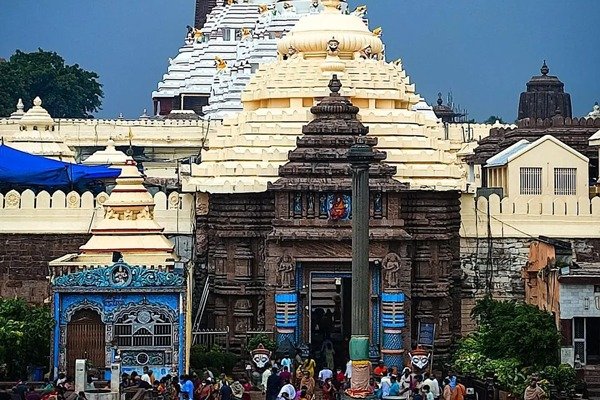Odisha government approved a proposal to re-open all four gates of Shree Jagannath Temple in Puri.
About Shree Jagannath Temple:
- The Shree Jagannath Temple revered as the White Pagoda, is situated in Puri, Odisha.
- This majestic temple is dedicated to Lord Jagannath, an incarnation of Lord Vishnu, along with his sister Devi Subhadra, and his elder brother Lord Balabhadra.
- Known as the holy trinity, these deities draw millions of devotees annually.
Historical Background:
- The temple dates back to the era of Anantavarman Chodaganga Deva, the founder of the Ganga dynasty.
- It stands as a monumental piece of history and spirituality, embodying centuries of devotion and architectural prowess.
Architecture:
- Showcasing the iconic Kalinga Architecture, the temple’s design features a blend of Rekha and Pidha structures.
- The complex includes the Vimana or Deula (sanctum sanctorum), Jagamohana (assembly hall), Natamandapa (festival hall), and Bhogamandapa (hall of offerings).
- The temple is fortified by two main enclosures; the outer Meghanada Prachira (Bahara Bedha) and the inner Kuruma Prachir (Bhitara Bedha), providing security and sanctity to the holy site.
- Symbolic Gates: Each of the temple’s gates holds unique significance:
- Singha Dwara (Lion’s Gate): Located in the east, this main entrance is associated with ‘mokshya‘ or liberation.
- Vyaghra Dwara (Tiger Gate): Situated in the west, it symbolizes ‘dharma‘ or righteousness.
- Hasti Dwara (Elephant Gate): Positioned in the north, it represents prosperity.
- Aswa Dwara (Horse Gate): Found in the south, it is linked to ‘kama‘ or desire.
Ref: Source
| UPSC IAS Preparation Resources | |
| Current Affairs Analysis | Topperspedia |
| GS Shots | Simply Explained |
| Daily Flash Cards | Daily Quiz |



